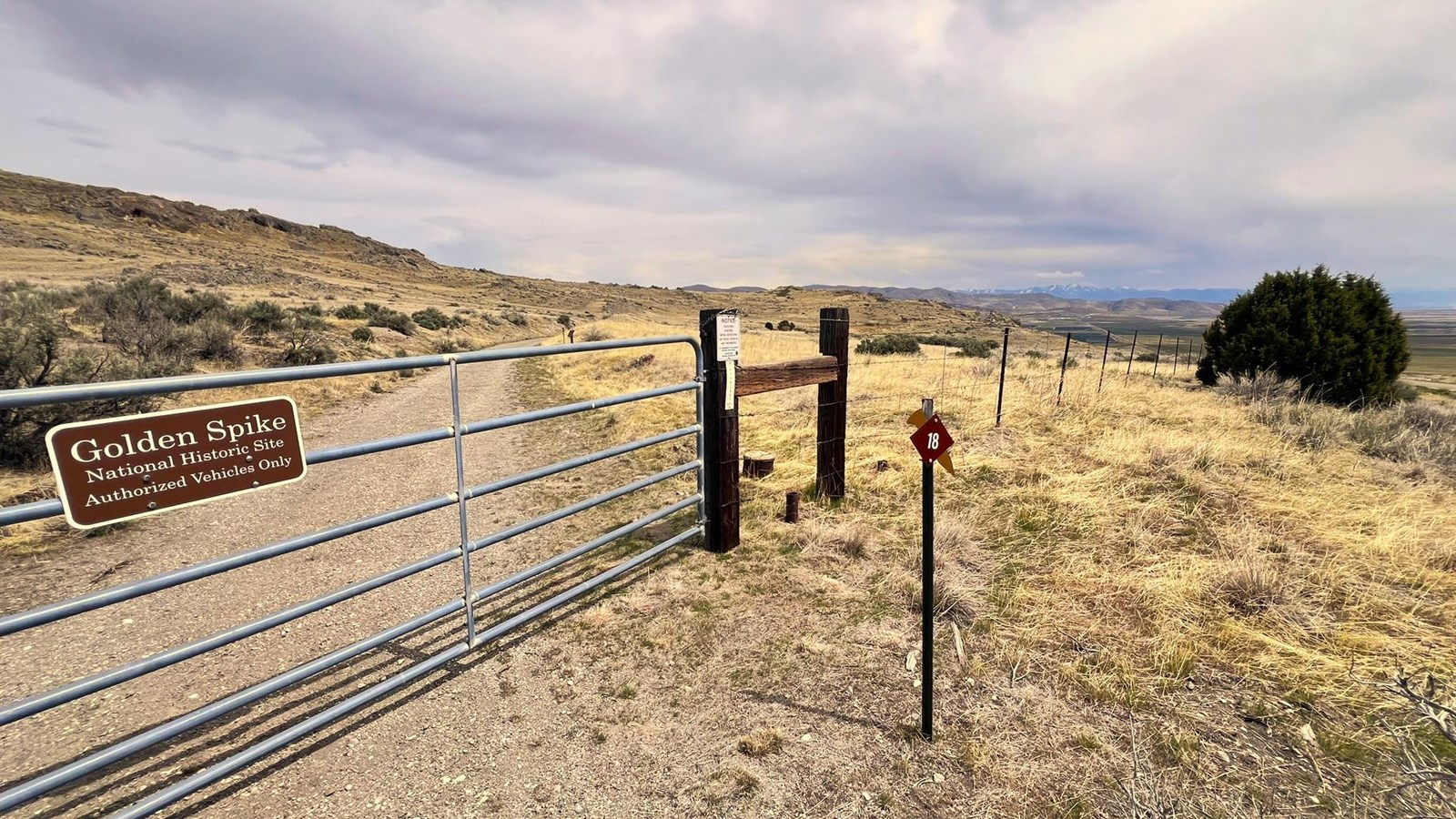Last updated: June 21, 2025
Place
#18 Big Fill and Big Trestle Site

NPS/ncastoro
Big Fill and Big Trestle Site
This leisurely walk will allow you to see many of the details of railroad construction close-up. Look for drill marks in the deep cuts. These long, straight scars from 1869 are silent testimony to the hurdle over the mountains.
You are walking on the Central Pacific grade that was maintained by the railroad from 1869-1942. Early in World War II, steel was needed for the war effort and tracks here were pulled up and scrapped. The Union Pacific grade to your right was used for less than a year after the railroad was completed. When the station was moved from Promontory to Ogden, the Central Pacific relocated the tracks to the grade they constructed, leaving the Union Pacific grade to the elements.
When building grade across the gully, a rock fill was preferred to constructing a wooden trestle. A fill took longer to build but was easier to maintain and was more durable. This "Big Fill" was built and named by the Central Pacific. However, the Union Pacific was pressed for time and chose a trestle for this site. Only thirty-two days were needed for construction but it produced a rickety structure at best. When the Central Pacific took control of the mainline between Promontory and Ogden, they moved the track to their own grade and abandoned the trestle. Most of the lumber was take for use elsewhere and within a few years only the rock fill abutments remained.
This leisurely walk will allow you to see many of the details of railroad construction close-up. Look for drill marks in the deep cuts. These long, straight scars from 1869 are silent testimony to the hurdle over the mountains.
You are walking on the Central Pacific grade that was maintained by the railroad from 1869-1942. Early in World War II, steel was needed for the war effort and tracks here were pulled up and scrapped. The Union Pacific grade to your right was used for less than a year after the railroad was completed. When the station was moved from Promontory to Ogden, the Central Pacific relocated the tracks to the grade they constructed, leaving the Union Pacific grade to the elements.
When building grade across the gully, a rock fill was preferred to constructing a wooden trestle. A fill took longer to build but was easier to maintain and was more durable. This "Big Fill" was built and named by the Central Pacific. However, the Union Pacific was pressed for time and chose a trestle for this site. Only thirty-two days were needed for construction but it produced a rickety structure at best. When the Central Pacific took control of the mainline between Promontory and Ogden, they moved the track to their own grade and abandoned the trestle. Most of the lumber was take for use elsewhere and within a few years only the rock fill abutments remained.
